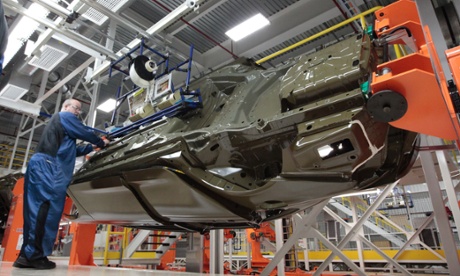Bob Kidder became chairman of Chrysler in 2009, just as the once-proud “big three” American automaker slid into bankruptcy. Survival was uncertain. It was time for the company to move in a new direction, fast. But Kidder soon saw that bureaucracy would be a major obstacle to revving up Chrysler and getting it back in gear.
The company’s process for approving new ideas was actually much better at killing them. “Anyone proposing something new had to go through four layers of management with a PowerPoint presentation that was different at each level,” Kidder recalls. “By the time it went up and came back to the level of the person who was making the proposal, the idea was watered down. Not only that, it took a long time. Bureaucracy had just sapped the energy out of the organization.”
On the plus side, incoming CEO Sergio Marchionne was determined to revitalize the business. He understood this could only be accomplished by changing Chrysler’s innovation-stifling culture. Kidder put his faith in Marchionne, assembling a board of directors who would stand behind the new CEO’s efforts to perform radical surgery.
“Sergio crashed through the old culture,” Kidder recalls. On his very first day at Chrysler, Marchionne moved the CEO’s office from the penthouse to the middle of the engineering department. He then streamlined senior leadership and asked most of his remaining 15 direct reports to lead more than one function, knowing that the increased work load would yield faster decision making. Marchionne also gave his team full authority to take risks without bureaucratic barriers. People were trusted to make smart decisions and be accountable. Kidder says: “Suddenly, we had this very flat organization, and guess what? The speed picked up immensely.”
“Sergio was relentless about commitment, so in terms of the new culture, it was all about speed and risk-taking,” Kidder continues. “I don’t think Sergio ever labeled it as such, but that’s what it was. If you think about Eminem’s song ‘8 Mile Road,’ it’s an anthem about taking risk. That became the anthem for the company. You get one chance, and we need to make this company successful.” This Eminem hit also became the soundtrack to Chrysler’s daring 2011 Super Bowl commercial.
Sales, which had free-fallen from 2.3m cars and trucks in 2005 to less than 1m in 2009, first stabilized at 1.1m vehicles in 2010 and rebounded to a 1.8m in 2013.
A great many factors contribute to such a rebound, but it all started when Kidder and Marchionne saw that Chrysler had to be energized to survive. The changes that energized Chrysler began at the very top, with the board of directors and the senior leadership team.
As it turns out, Kidder and Marchionne were after far more than mere survival. In 2011, when the company was nearing the point of repaying its government loan early, Marchionne sent an impassioned email to all Chrysler employees. The main theme was not survival, but sustainability and purpose:
The choice we have is between seeking only to build up our own organization, or to develop a profitable enterprise that also promotes a better world. For my part, the choice is clear. The only way I can look at myself in the mirror every morning is if I know that sustainability is part of the very fabric of our business, and that we are helping create the conditions on which a positive future can emerge for our company, our children and humanity as a whole. Our success will be judged not only by what we do, but by how it is achieved.
The story of how Kidder and Marchionne led Chrysler back from the abyss is, in truth, a case study in sustainability, which can only be achieved when leaders effectively energize the organization and then direct that energy where it most needs to go. This begins with understanding your company’s “footprint” and “handprint”. Your company’s footprint is the sum total of the environmental and social costs of what you do, while your handprint is why you are here, encompassing all that your company contributes to the world.
Marchionne clearly understands this better than most. With essential backing from Bob Kidder and the new Chrysler’s board, he championed a new culture of purpose: Chrysler would build revolutionary cars, “Imported from Detroit”, and would work tirelessly to create “a positive future can emerge for our company, our children and humanity as a whole”. Energy was fundamental to that culture’s birth and will remain key to its sustained success.
A purposeful culture does not fall from the sky; it doesn’t spring from happy accidents or baffling evolutions. Such cultures are built, over time, by leaders. What can you do to encourage a more purposeful culture? Feel free to leave any questions in the comments, below. We’ll be exploring other key characteristics in the following weeks.
Christoph Lueneburger, author of A Culture of Purpose: How to Choose the Right People and Make the Right People Choose You, founded the sustainability practice and currently leads the private equity practice at Egon Zehnder, the world’s largest privately-held executive search and talent strategy firm.
The values-led business hub is funded by SC Johnson. All content is editorially independent except for pieces labelled advertisement feature. Find out more here.










